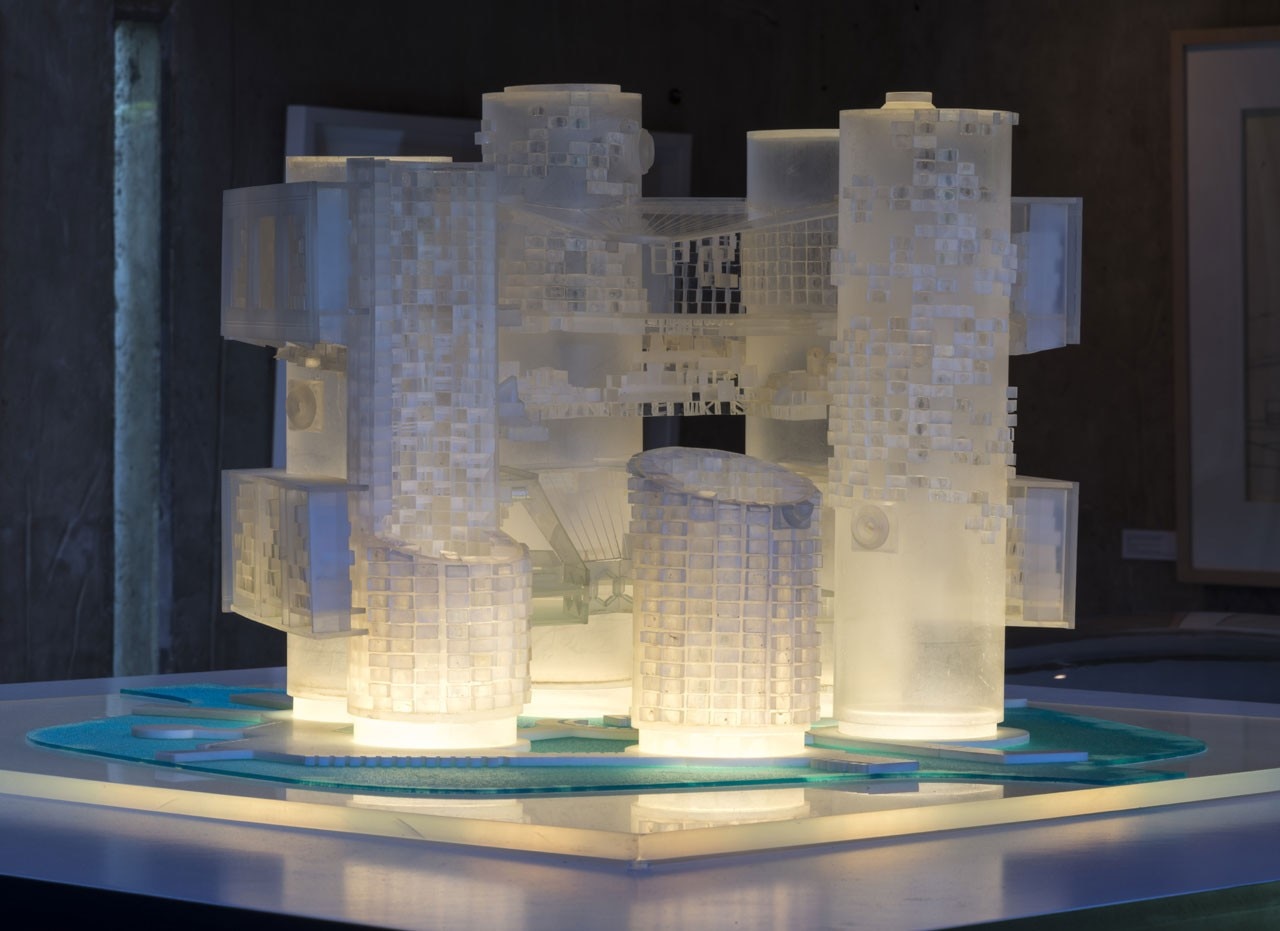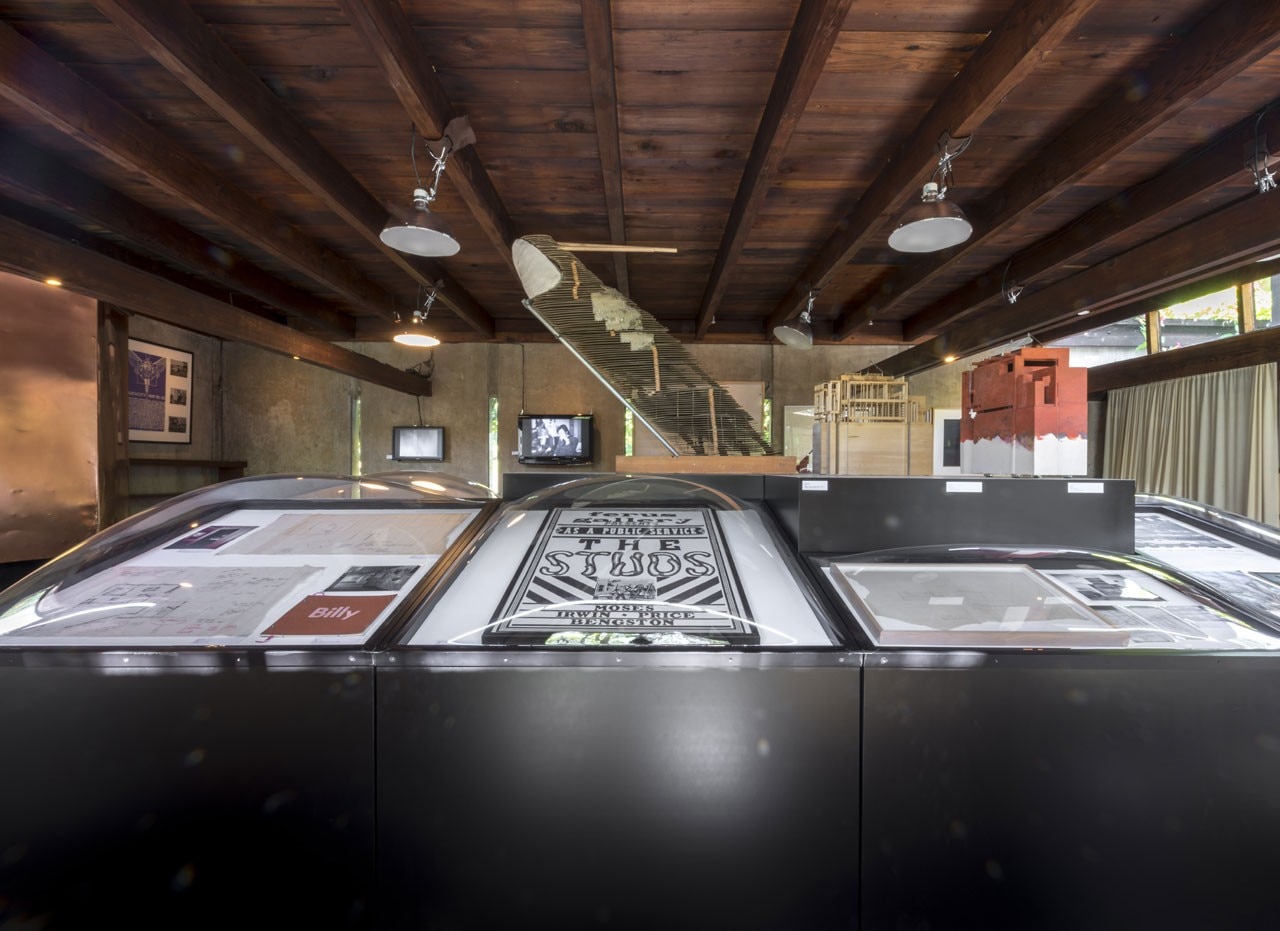
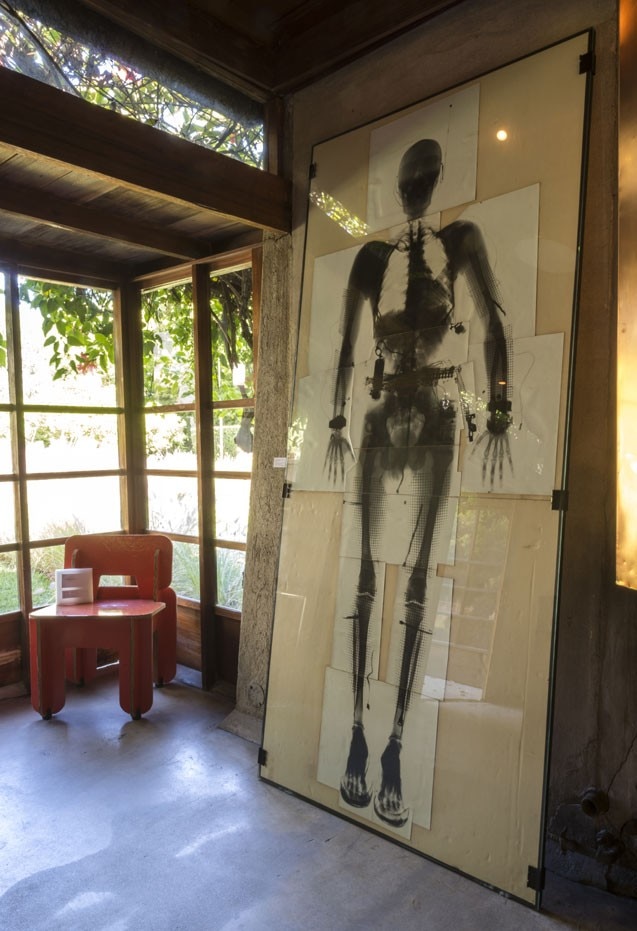
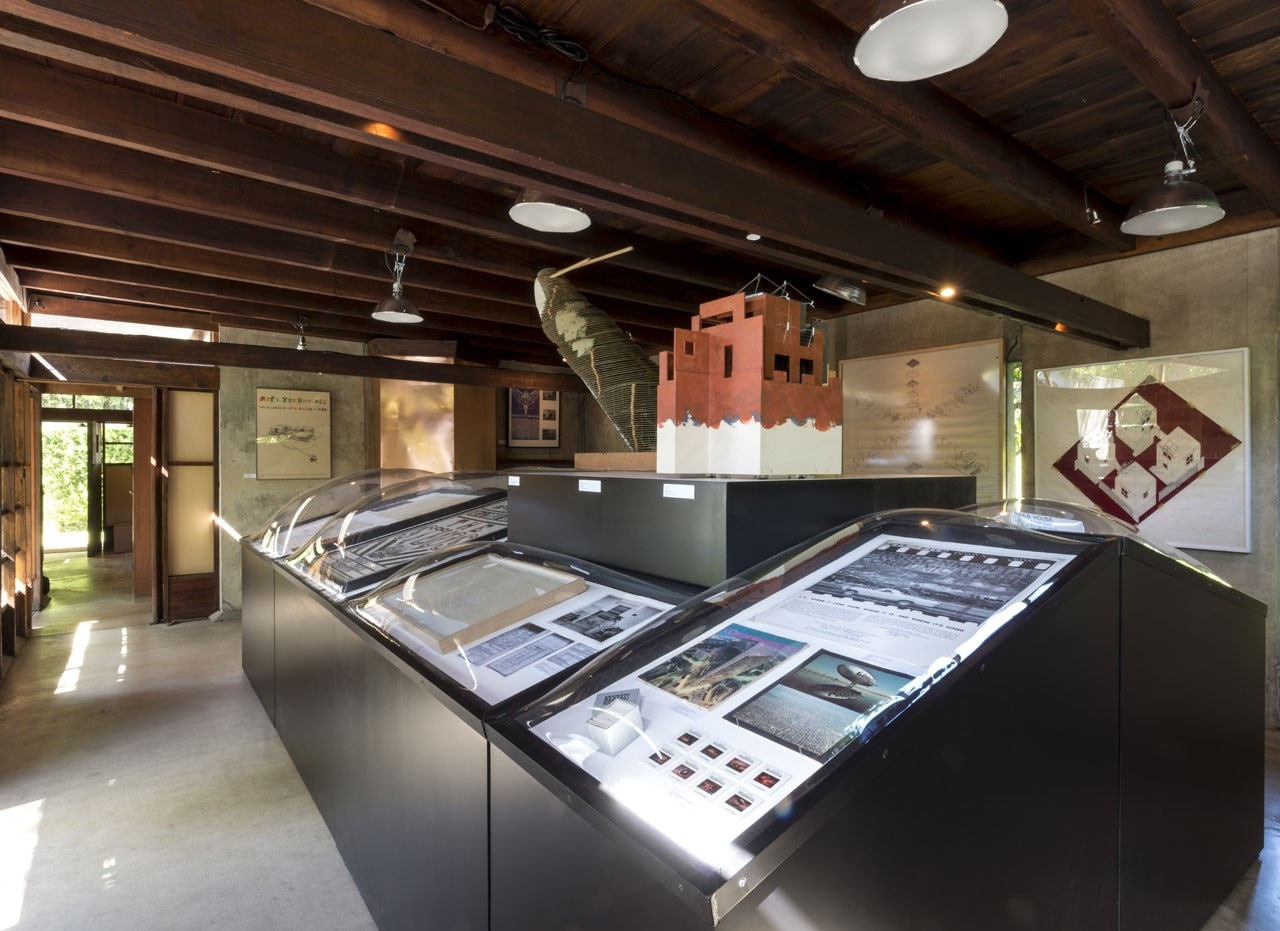
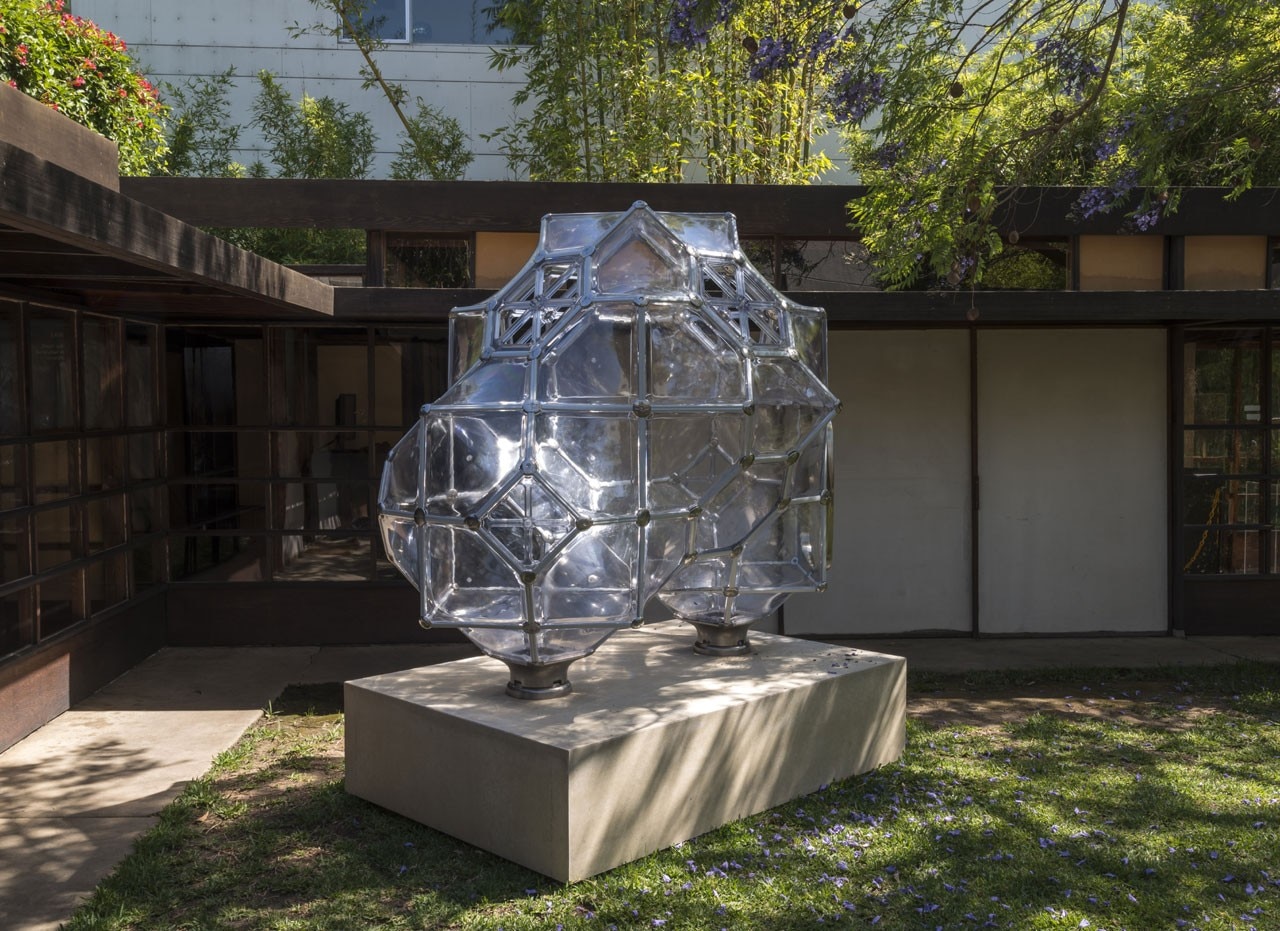
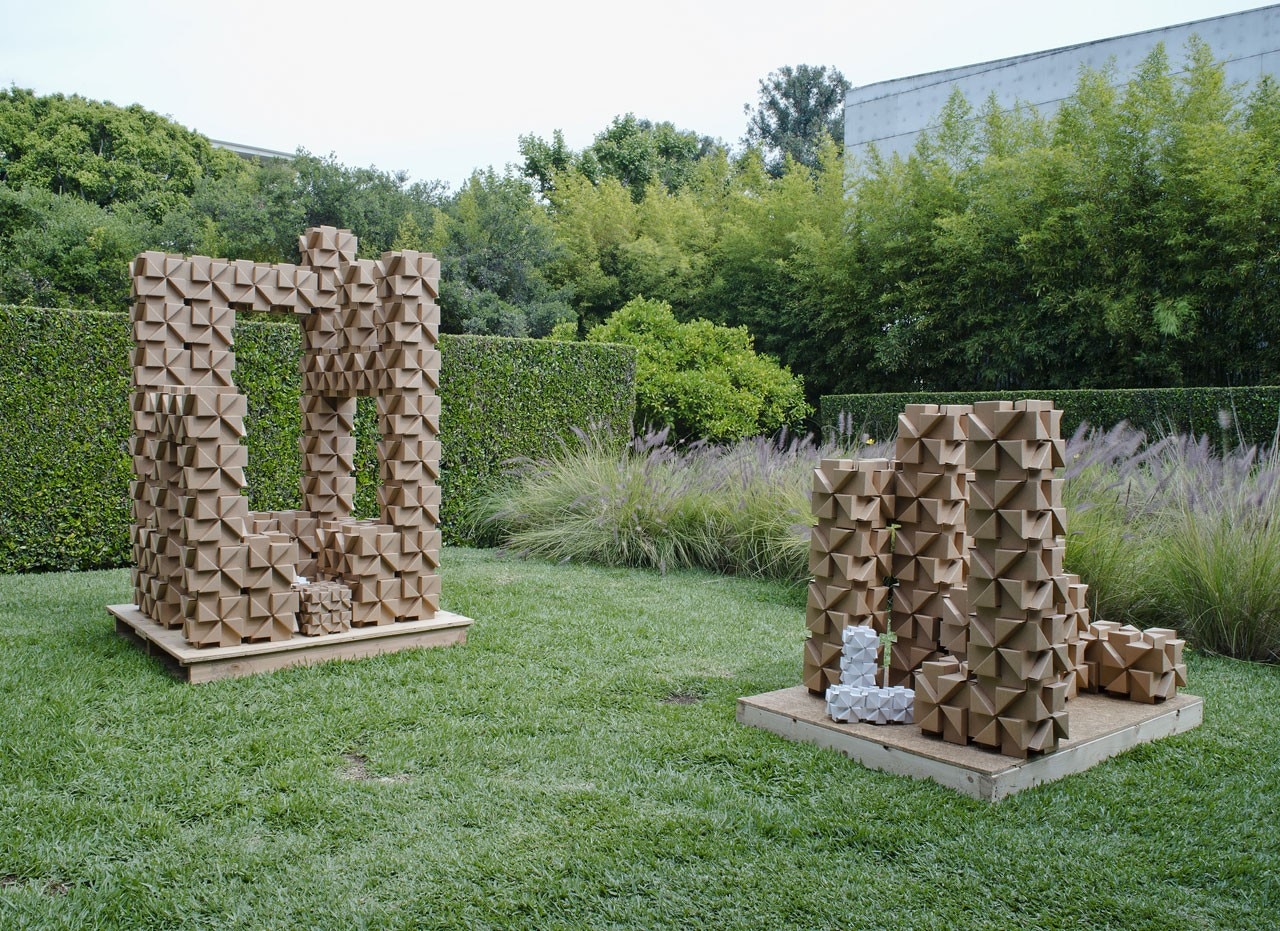
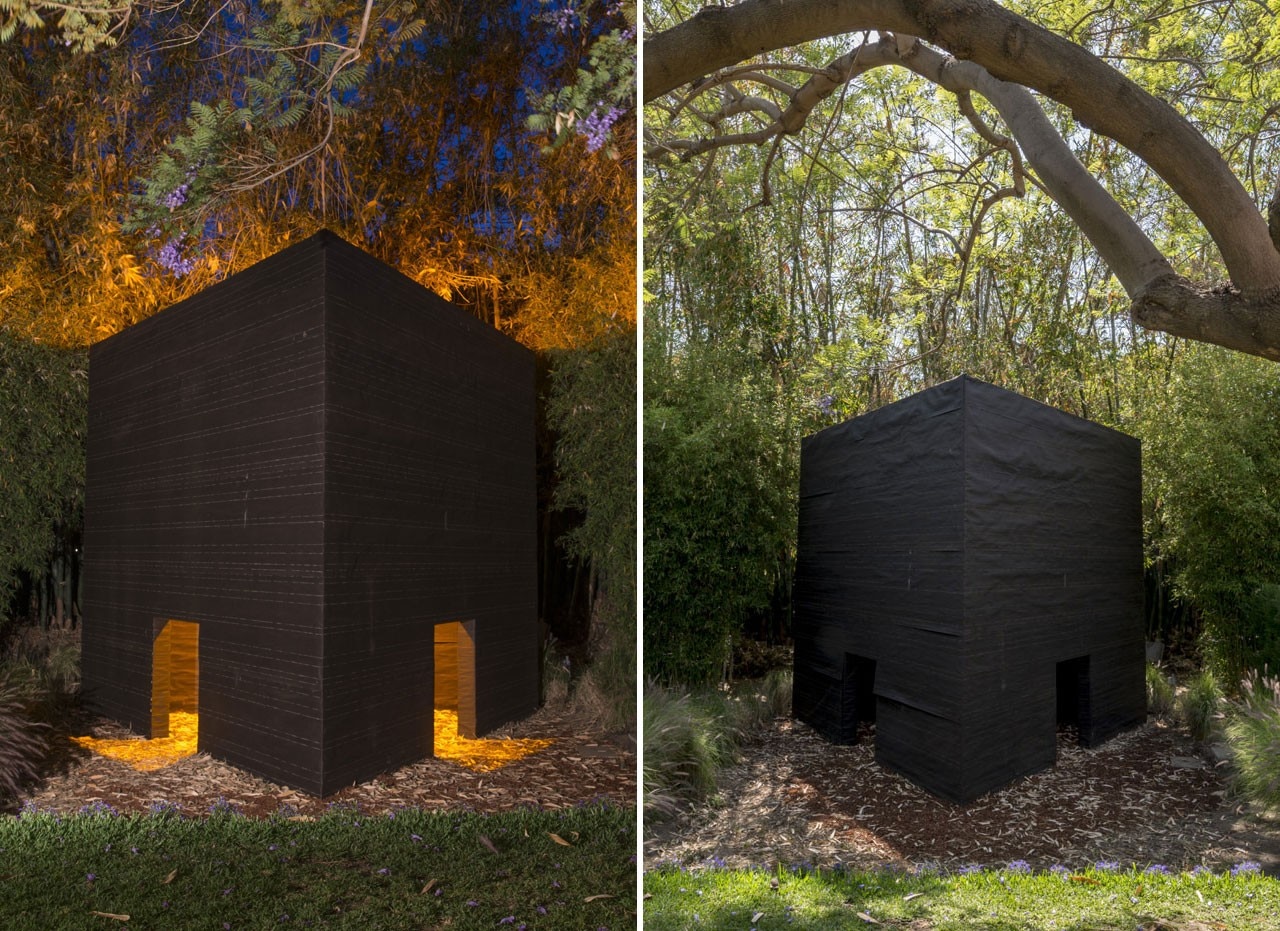
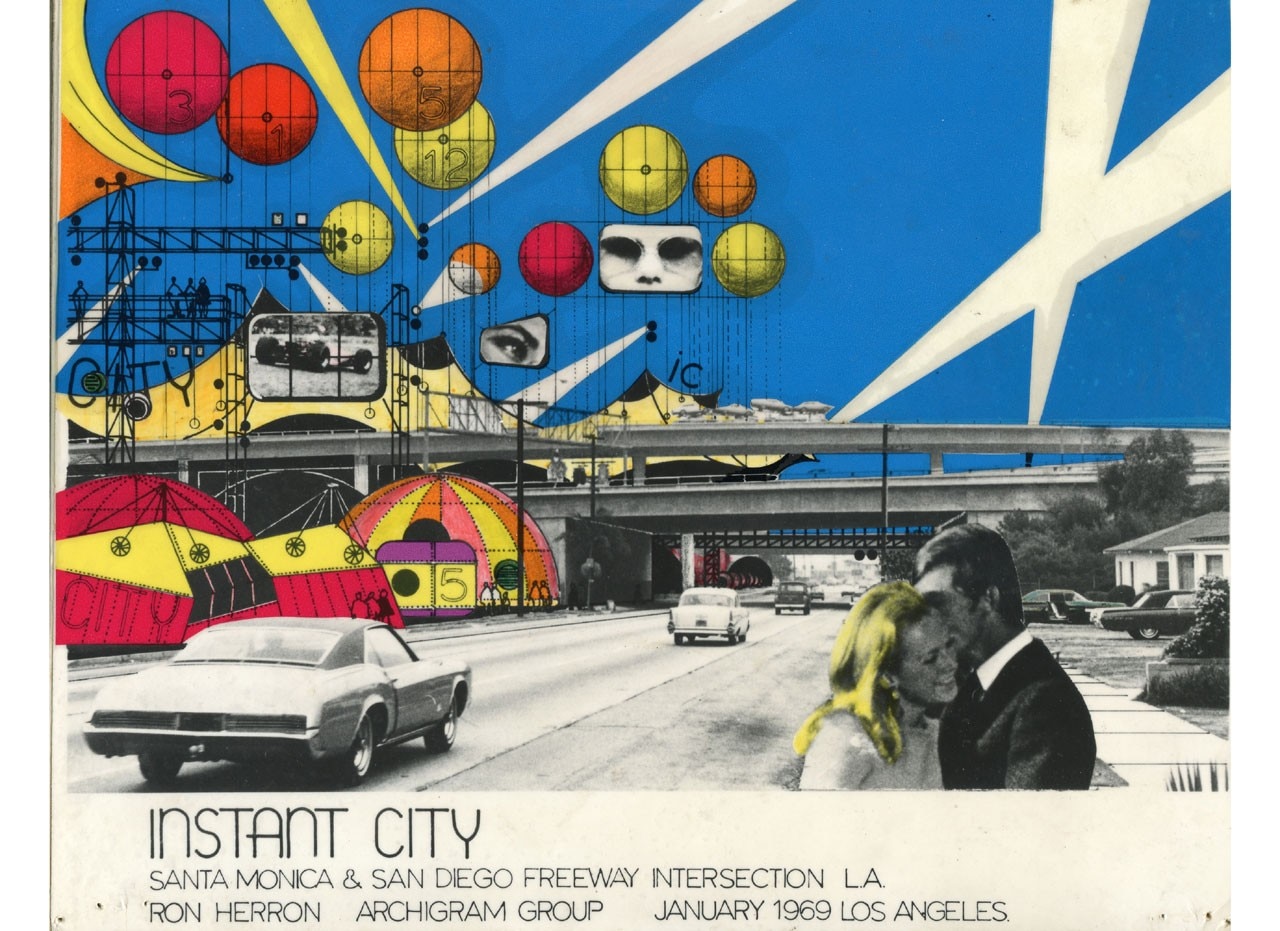
Of the many shows I’ve seen at the Schindler House, this one uses the physical space in a notably unexpected way. Unafraid of cluttering the sparseness of the House, “Everything Loose Will Land” packs a chain reaction of info into each room, without detracting form the visible humility of the existing space.
The show spreads outdoors, with three large sculptural projects: Bruce Nauman’s Untitled (Equilateral Triangle), Jef Raskin’s installation of Bloxes (modular cardboard building blocks, which many show-goers took home as party favors), and a portion of Peter Jon Pearce’s Curved Space Playground Structure, an elaborate crawlspace made of polycarbonate plastic and aluminum.
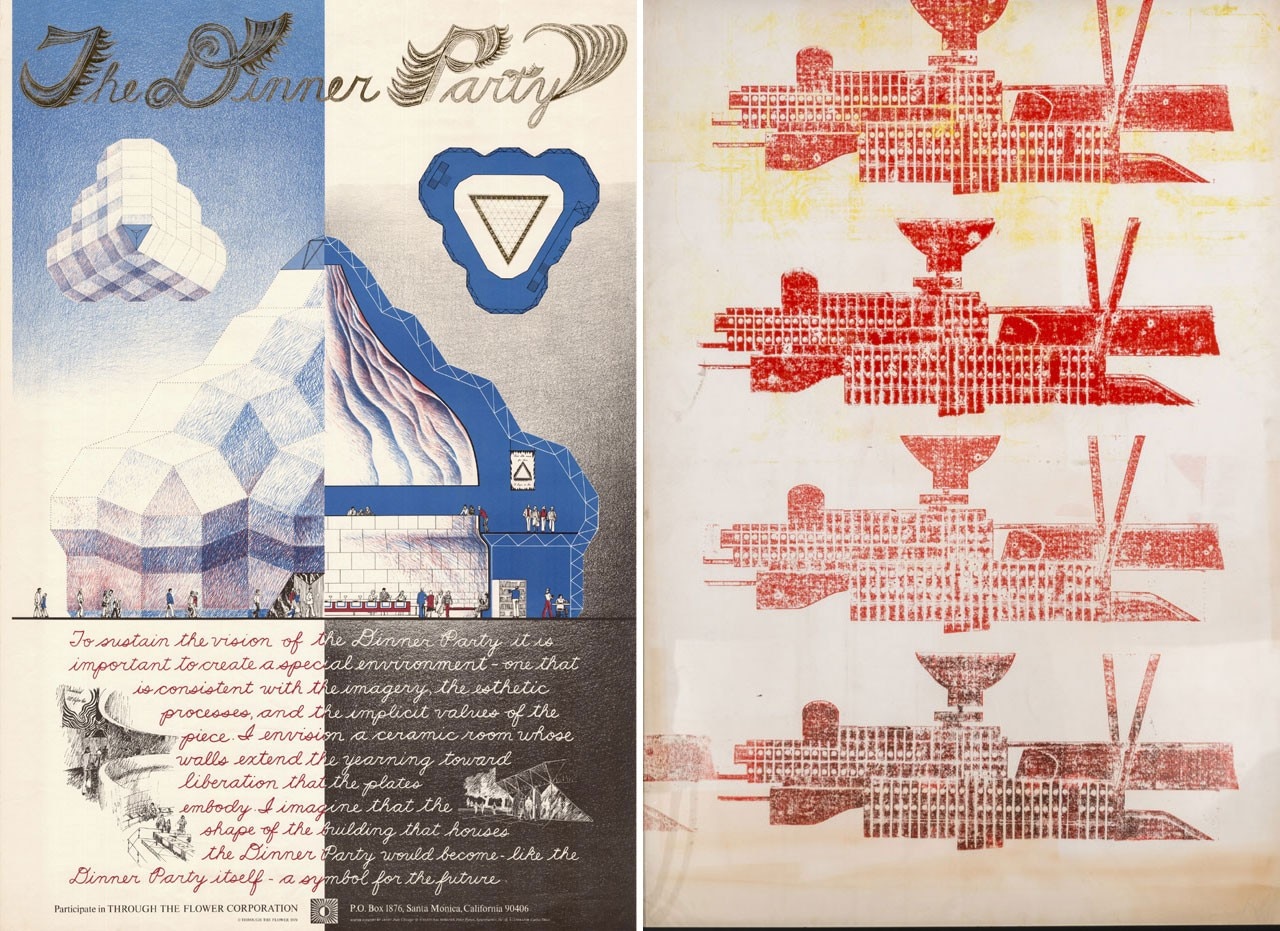
Even though it requires a lot of brainpower from its viewers, “Everything Loose Will Land” is remarkably tangible: physical presence is a considered and important element of a show all about physical presence. I look forward to reading the forthcoming 272-page color publication accompanying the show, which is bound to go even deeper into tales from the underground. Tip the world over on its side, and it seems many of the most interesting digressions that were deemed ‘too marginal’ for art and architecture shows on display elsewhere have landed in this exhibition.
Until 4th August 2013
Everything Loose Will Land
MAK Center, Schindler House,
Kings Road 835
West Hollywood, Los Angeles
